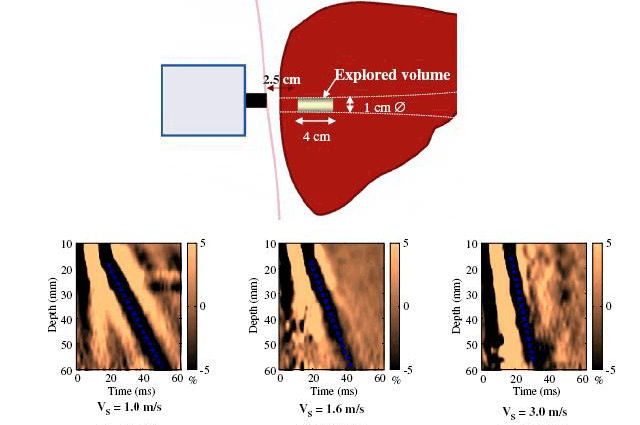Contents
Definition of fibroscan
Contrary to what its name suggests, the fibroscan is not a fiberoptic, nor a scanner. This is a test that involves quantifying the liver fibrosis, by determining the hardness of the liver tissue. The advantage is that you do not have to penetrate inside the body: the fibroscan is a painless and non-invasive examination. The fibroscan (which is actually the name of a technology patented by a French firm, Echosens) is also called ultrasonic impulse elastometry.
Liver fibrosis is the result of multiple chronic liver problems : alcoholism, viral hepatitis, etc. These lead to the formation of scar tissue which replaces damaged liver cells: this is fibrosis. It disrupts the architecture of the liver both anatomically and functionally, and its progression can lead to cirrhosis (scar tissue present throughout the liver).
Why perform a fibroscan?
The doctor does a fibroscan to assess the severity of the liver fibrosis. The examination also makes it possible to monitor its progress.
This exam can also be used for:
- monitoring of hepatitis under treatment
- monitor complications of cirrhosis
- diagnose complications after liver transplant
- characterize liver tumors
Note that the evaluation of hepatic fibrosis can also be done by liver biopsy (taking liver cells) or by blood test, but these examinations are invasive, unlike the fibroscan.
The intervention
The procedure is painless and comparable to an ultrasound.
The fibroscan consists of using theelastometry (or elastography) impulse controlled vibration: a technique used to assess the propagation of a shock wave in the liver and to measure its elasticity. The faster the wave propagates, the more rigid the liver, and therefore the greater the fibrosis.
To do this, the doctor places a probe between the ribs on the surface of the patient’s skin while lying on the back with the right arm placed behind the head. The probe generates a low frequency wave (50 Hz) which passes through the liver and sends a wave back to the probe. The device calculates the speed and strength of this echo to assess the elasticity of the liver.
About ten valid measurements must be taken during the examination.
What results can we expect from a fibroscan?
The exam only lasts 5 to 15 minutes and the result is instantaneous.
The elasticity of the liver is measured in kilopascal (kPa). The value obtained corresponds to the median of 10 measurements and the figure oscillates between 2,5 and 75 kPa.
Thus, depending on the damage to the liver, the elasticity scores vary, the fibrosis is more or less marked and different stages are described:
- between 2,5 and 7, we speak of stage F0 or F1: absence of fibrosis or minimal fibrosis
- between 7 and 9,5, we speak of stage F2: moderate fibrosis
- between 9,5 and 14, we speak of stage F3: severe fibrosis
- beyond 14, we speak of stage F4: scar tissue is present throughout the liver, and cirrhosis is present
To complete his diagnosis, the doctor may order other examinations such as a liver biopsy or a blood analyse.
Read also : All about the different forms of hepatitis Learn more about cirrhosis |










